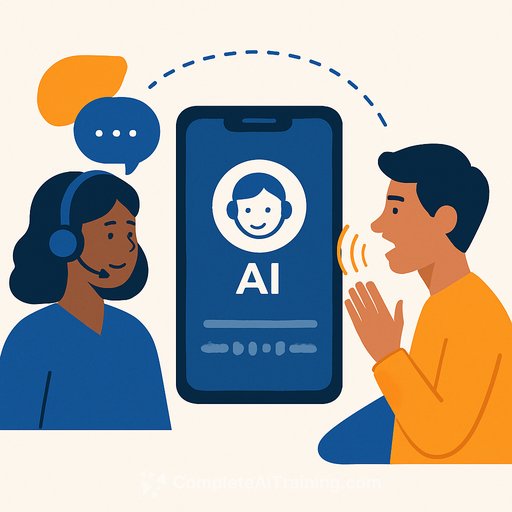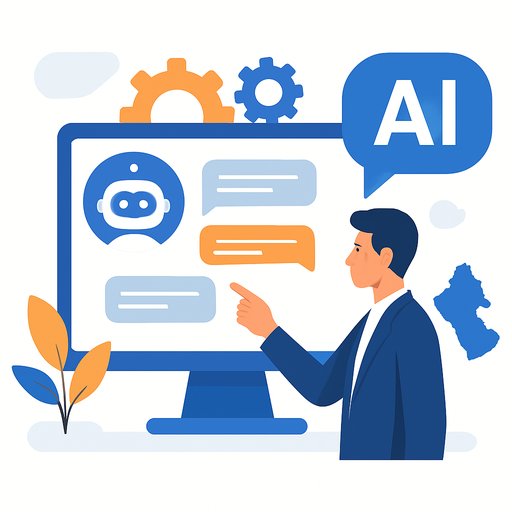How to drive adoption of contact center voice AI
Voice is still the most-used support channel. Interest in automated support is growing, but many voice bots miss the mark and send customers back to IVR or web portals. "Given that voice is the most popular channel, it follows that if you're going to win big on automation, it's by offering an excellent voice AI experience," said Nicole Kyle of CMP Research.
What customers actually want from voice AI
- Fast, accurate answers on simple tasks.
- Clear options and a quick path to a human.
- Natural turn-taking, low latency, and the ability to interrupt (barge-in).
- Transparency about what the system can do and what's recorded.
Only a small share of consumers say a conversational voice agent is their top choice today. That changes when the experience is faster and more reliable than IVR or the portal.
Start with the right segment
Don't push everyone to a new path. Find the customers who prefer calling and are open to automated self-service. Route that segment to your voice AI first and learn quickly. Expand only after the experience meets or beats your live-agent baseline.
Pick tech that matches your maturity
Conversational voice AI is not the same as generative AI. Many high-volume, repeatable intents run best on a strong NLU + deterministic flows with guardrails. Add generative components for summarization or small-talk only if you can govern accuracy and cost.
Design principles that reduce call-backs
- Intent coverage: Start with your top 10-20 intents and aim for 90-95% recognition on those before adding more.
- Latency: Keep turn latency under ~300 ms and total task time under the live-agent average.
- Barge-in: Let callers interrupt and recover gracefully.
- Confirmation: For payments or account changes, confirm details concisely and only once.
- Escalation: After two failed attempts, offer a live agent and pass full context.
- Compliance & privacy: Announce recording, mask PII, and store transcripts securely.
Automate the right use cases first
- Order status, delivery updates, reservation changes, store hours.
- Balance checks, payment extensions, simple plan changes.
- Appointment booking, reorders, password resets via OTP.
A practical example: Red Lobster rolled out voice automation for takeout orders to free front-of-house staff and speed service. Similar "high-volume, low-variability" use cases are your best starting point.
Rollout plan that earns trust
- Pilot: 10-20% traffic on selected intents. Compare against control.
- Guardrails: Escalate at two errors; offer "agent" at any time.
- Training: Prep agents for mid-call takeover and post-call coaching.
- Messaging: Tell callers what the system can do and how to reach a human.
- Tuning: Review top failed intents daily; ship improvements weekly.
Metrics that prove adoption
- Containment rate with satisfaction: Target equal or higher CSAT than live agents.
- Resolution quality: First-contact resolution and 24-hour recontact rate.
- Speed: Average time to answer and task completion time vs. live agents.
- Cost: Cost per resolved contact and minutes per successful task.
- Experience: Barge-in usage, interruption rate, and handoff friction (context passed).
Procurement checklist
- Telephony integrations (SIP, carrier), barge-in, low-latency TTS/ASR, noise handling.
- Tuning tools: Intent reports, replays, labeling, AB testing.
- Security: PII redaction, data residency, encryption, access controls.
- Analytics: Containment with CSAT, FCR, recontact, and cost dashboards.
- Pricing clarity: Per-minute or per-interaction, LLM usage, support tiers.
Common pitfalls to avoid
- Automating edge cases before nailing the top intents.
- Forcing containment and hiding the live-agent option.
- Long prompts, robotic tone, and slow responses.
- No context passed to agents during handoff.
90-day plan
- Days 0-30: Map top intents, write flows, define guardrails and metrics.
- Days 31-60: Pilot with targeted callers, daily tuning, agent training.
- Days 61-90: Expand traffic, add 5-10 intents, tighten SLAs and reporting.
Voice will keep leading support volume. The teams that win will focus on a clean experience, conservative scope, and relentless tuning. Start small, prove it, then scale.
If your team needs structured upskilling on AI for support, explore curated options here: AI courses by job.
Your membership also unlocks:





